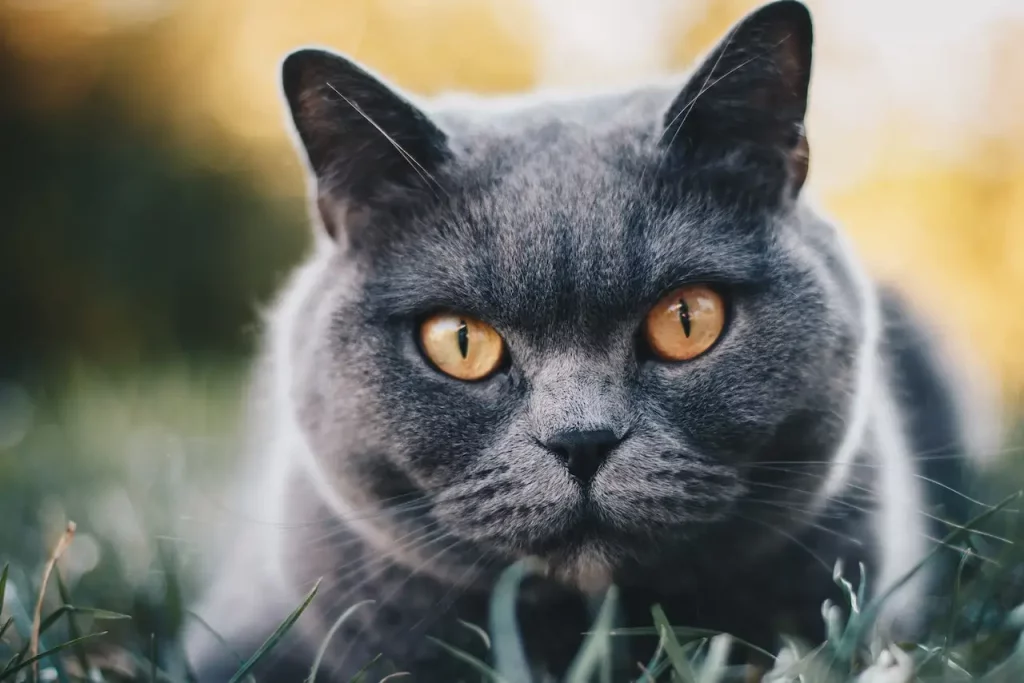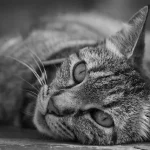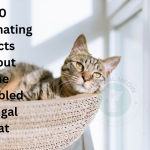The Ultimate Showdown: British Shorthair vs Bengal – Unraveling the Perfect Feline Choice!
Cats have been our loyal companions for centuries, captivating us with their charm, independence, and affectionate nature. Two of the most popular and intriguing feline breeds that have won the hearts of cat lovers worldwide are the British Shorthair and the Bengal. Explore the captivating clash between British Shorthair vs Bengal cats
Each possesses its unique characteristics and qualities that make them stand out in the feline world. In this article, we’ll explore the fascinating differences between the British Shorthair and Bengal, shedding light on their history, appearance, personality, care requirements, health considerations, and popularity.
🐾History and Origins🐾
British Shorthair’s Rich History in Britain
The British Shorthair is a breed steeped in history, with roots dating back to ancient Britain. These cats were beloved companions of ancient Romans and were introduced to Britain during their occupation. Over the centuries, the breed developed distinct characteristics, becoming popular among cat enthusiasts. With their documented presence in early cat shows, the British Shorthair gained recognition and admiration for its unique attributes.

Bengal’s Exotic Ancestry
In contrast, the Bengal breed’s lineage is relatively more recent and traces back to the 20th century. Bengal cats are the result of crossing domestic cats with the wild Asian Leopard Cat (ALC), infusing their bloodline with the allure of the wild. Developed through selective breeding efforts, Bengals showcase the beauty and elegance of the wild leopard, yet maintaining the demeanor of a domestic cat.
Check also Are Bengal Cats Hypoallergenic? Debunking the Myth
🐱Physical Characteristics🐱
British Shorthair’s Robust and Charming Appearance
The British Shorthair’s appearance exudes charm and elegance. With a compact and sturdy body structure, these cats have a rounded face adorned with chubby cheeks. Their coat comes in a variety of colors and patterns, from the classic blue (gray) to cinnamon, black, and more. Their plush, short fur adds to their delightful appeal, requiring minimal grooming.
Bengal’s Striking and Wild Appearance
The Bengal’s appearance is undoubtedly captivating, showcasing their wild ancestry. The most notable feature is their luxurious coat adorned with rosettes, spots, and striking stripes, closely resembling that of their wild ancestors. Coupled with their sleek and muscular build, Bengals possess an alluring and athletic presence. Their almond-shaped eyes and high cheekbones enhance their wild look, leaving a lasting impression.
Check also Bengal Cat vs Tabby Cat: Understanding the Key Differences
🐱Personality Traits: British Shorthair vs Bengal Cat🐱
British Shorthair’s Calm and Regal Demeanor
British Shorthairs are known for their calm and composed temperament. They exude regality and confidence, often maintaining a relaxed and laid-back attitude. While they enjoy human affection, they are also independent, not requiring constant attention. Playful in moderation, they are content with simple toys and interactive activities, without being overly energetic.
Bengal’s Energetic and Intelligent Nature
On the other hand, Bengals are highly energetic and intelligent cats. Their wild ancestry has bestowed them with agility and curiosity, driving their need for mental and physical stimulation. Bengals thrive on interactive play and enjoy challenges that keep their minds engaged. Additionally, their intelligence makes them easily trainable, enabling them to learn tricks and commands.
Check also Types of Bengal Cats: A Comprehensive Guide to the Different Varieties
🐱Living Requirements: British Shorthair vs Bengal Cat🐱
British Shorthair’s Adaptable and Easygoing Lifestyle
British Shorthairs are known for their adaptability, making them suitable for both indoor and apartment living. They are content with a relaxed and easygoing lifestyle, requiring moderate exercise to maintain their health. Their short fur means they are not particularly sensitive to temperature fluctuations. Moreover, their grooming needs are minimal, making them easy to care for.

Bengal’s Need for Stimulation and Space
In contrast, Bengals thrive in an environment that provides ample space for exploration and play. Due to their active nature, they require room to climb, jump,
and exercise. An enriched living environment with interactive toys and scratching posts is essential to keep them mentally stimulated and prevent boredom-related behaviors. Additionally, their lush coat necessitates regular grooming to keep it in top condition.
🐱Compatibility with Families and Other Pets🐱
British Shorthair’s Amiable Nature with Families
The British Shorthair’s gentle and patient demeanor makes them ideal companions for families with children. They are tolerant of young ones and tend to form strong bonds with all members of the household. Moreover, their peaceful disposition allows for harmonious relationships with other pets, making them a great addition to multi-pet households.
Check also Do Bengal Cats Get Along Well With Other Cats? All you Need to Know
Bengal’s Social Nature in Family Settings
Similarly, Bengals are social cats and often become attached to specific family members. Their playful and engaging nature makes them suitable playmates for children, but their high energy levels require supervision during interactions. When introduced properly, Bengals can get along well with other pets and develop friendships with them.
🐱Health Considerations🐱
Common Health Issues in British Shorthairs
British Shorthairs are generally healthy cats, but they can be prone to certain health issues, including obesity, dental problems, and certain genetic predispositions. Regular check-ups and a balanced diet are essential to keep them in good health.
Common Health Issues in Bengals
Bengals, like all breeds, have their health concerns. Hypertrophic Cardiomyopathy (HCM), a heart condition, is one of the primary health issues seen in Bengals. Regular veterinary check-ups and genetic testing are essential to ensure responsible breeding and maintain the breed’s overall health.
🐱Care and Maintenance🐱
Caring for a British Shorthair
Proper nutrition and feeding are crucial for maintaining a British Shorthair’s health, as they can be prone to weight gain. Regular veterinary check-ups and mental stimulation through playtime are essential for their well-being.
Check also Best Interactive Cat Toys for Hours of Playful Fun
Caring for a Bengal
High-protein diets and regular exercise are essential to meet the Bengal’s energetic needs. Interactive toys and climbing spaces help keep them engaged and prevent boredom. Regular grooming is also necessary to maintain their beautiful coat.
🐱Popularity and Availability🐱
British Shorthair’s Enduring Popularity
The British Shorthair’s popularity has endured over the years, thanks to their charming looks and amiable personalities. They are widely available through reputable breeders, but potential owners should ensure responsible sourcing to support ethical breeding practices.
Check also Bengal Vs Savannah Cat : Are they Alike? (Similarities & Differences)
Bengal’s Rising Popularity and Desirability
Bengals have gained popularity in recent years, partly due to their exotic appearance and social media exposure. However, their desirability has also led to unethical breeding practices. It is crucial for prospective Bengal owners to do thorough research and choose responsible breeders.
FAQs for British Shorthair vs Bengal Cat🐾
Q: What are the main differences in temperament between British Shorthairs and Bengals?
British Shorthairs are known for their calm and regal demeanor, while Bengals are highly energetic and intelligent. British Shorthairs are more laid-back and independent, while Bengals require more mental and physical stimulation. Understanding their unique personalities can help you choose the cat that best matches your lifestyle.
Q: Which breed requires less grooming, British Shorthair or Bengal?
British Shorthairs have a short and plush coat that requires minimal grooming. On the other hand, Bengals have a luxurious coat with spots and rosettes, which needs regular brushing to keep it in top condition. If you prefer a low-maintenance grooming routine, the British Shorthair might be the better choice for you.
Q: Are British Shorthairs and Bengals suitable for families with children?
Both British Shorthairs and Bengals can make excellent family pets. British Shorthairs are generally patient and gentle with children, making them a great choice for families. Bengals are also social and playful, but their high energy levels may require supervision during interactions with younger children. Proper introductions and supervision are essential for any cat breed around children.
Q: What are the exercise requirements for British Shorthairs and Bengals?
British Shorthairs have moderate exercise needs and are content with indoor play and interactive toys. They are not as active as Bengals and can adapt well to apartment living. On the other hand, Bengals need more physical and mental stimulation due to their high energy and intelligence. Providing ample space, climbing structures, and interactive playtime are essential for their well-being.
Q: Are there any specific health concerns associated with British Shorthairs and Bengals?
While both breeds are generally healthy, they may have specific health considerations. British Shorthairs can be prone to obesity and dental issues, so maintaining a balanced diet and regular dental care is crucial. Bengals, on the other hand, are predisposed to Hypertrophic Cardiomyopathy (HCM), a heart condition. Regular veterinary check-ups and genetic testing can help identify and manage potential health issues in both breeds.
Conclusion🐾
In conclusion, both the British Shorthair and Bengal are extraordinary feline companions, each possessing unique qualities that set them apart. The British Shorthair charms with its regal and easygoing demeanor, while the Bengal captivates with its striking appearance and energetic nature. The decision between these two breeds ultimately depends on the owner’s lifestyle, living conditions, and the ability to meet their respective needs. Whichever breed is chosen, both the British Shorthair and Bengal are sure to bring joy, love, and companionship to their forever homes.





